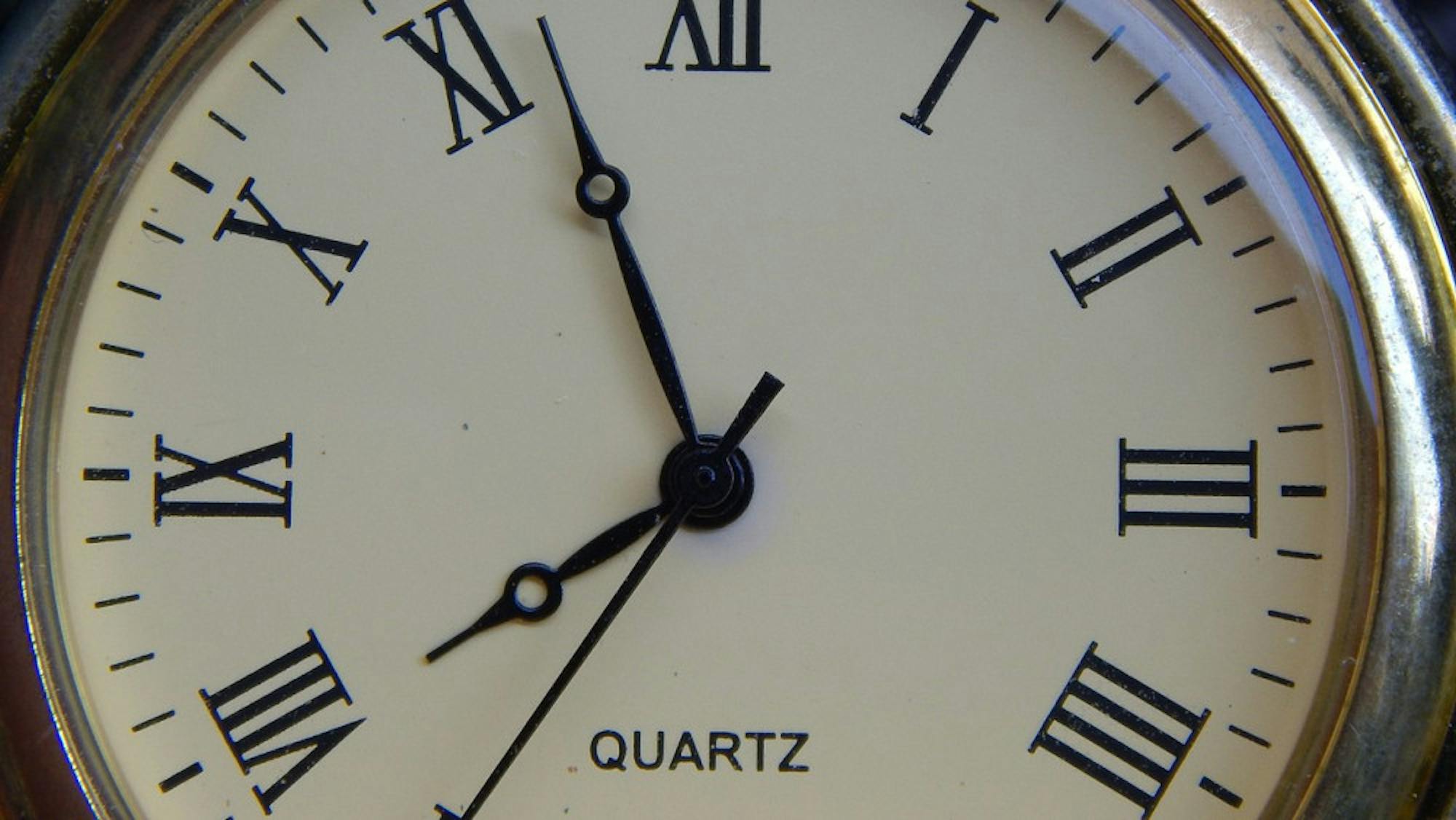Time moves forward toward the next exam, next semester, graduation, the future. Unfortunately, that future could be cut short according to the Doomsday Clock, which now sits at 90 seconds to midnight. Despite its somewhat ominous nomenclature, the Doomsday Clock is not a crazy, cultish phenomenon about the world ending, but a scientific measurement of how close we are to global human catastrophe. Scientists at the University of Chicago created the Doomsday Clock in 1947 to warn humans of the dangers of human-made technologies, like nuclear weapons. Manhattan Project scientists who helped build the first atomic bomb opposed its use against people and subsequently formed theBulletin of Atomic Scientists. The Bulletin needed a cover design for the June 1947 edition of their magazine, so they asked artist Martyl Langsdorf. Martyl was married to physicist Alexander Langsdorf Jr., who worked on the Manhattan Project. Hearing countless discussions about nuclear weapons and the risk they pose to humanity, “she sketched a clock to suggest that we didn’t have much time left to get atomic weapons under control.” The Doomsday Clock’s status is reassessed every year by the Bulletin’s Science and Security Board and its Board of Sponsors, a group that includes 13 Nobel laureates. It provides an authoritative assessment of the world’s current risk of annihilation by human-made technologies.
The Doomsday Clock is described as “a metaphor.” While most studies on threats to human existence present scientific data to inspire action and policy, the Doomsday Clock is only a clock. However, its greater meaning is a warning for humans to be wary of what we have created. The Doomsday Clock emphasizes urgency of action on climate change and nuclear weapons to prevent the clock from reaching midnight, which symbolizes the end of life as we know it.
At the time of its creation, the greatest risk to humanity was the growing nuclear threat between the U.S. and the Soviet Union. However, in 2007 the clock began including risks from climate change in the calculation of time. The year 1991 saw the world’s seemingly safest hour at 17 minutes to midnight, but we have been inching closer to midnight almost every year since.
Friday, Feb. 24 will mark one year since the full-scale Russian invasion of Ukraine. For the first time in decades, this ongoing war brings nuclear threat to the forefront. Detonating a modern-day warhead would cause extreme damage with power 10 times that of bombs detonated during World War II. Because of this threat, the Doomsday Clock sits at just one minute and 30 seconds to midnight with its trajectory largely determined by the leaders of the nine nations who possess nuclear weapons.
Our nation has seen antinuclear protests; young people spearheaded these protests in the 1940s as part of the anti-nuclear movement. However, protests peaked in the 1960s and 1980s, and the movement lost momentum. Yet the threat remains. In 2023, in the context of Chinese spy balloons and the Russia-Ukraine war, we need to remember the fervor of those anti-nuclear protests and raise awareness of the urgency of the nuclear threat. Students at Tufts, known for strong social advocacy, emphasize environmental activism. However, we need to raise awareness of and funds for nuclear disarmament. Despite only being added to the clock’s calculus in 2007, climate change activism has risen to the top of national and world policy agendas. Environmental organizations receive more funding than nuclear disarmament groups, and, in the U.S. alone, there are almost 15,000 environmental nonprofit groups compared to around 40 anti-nuclear groups. While environmental issues and climate change do pose a threat to human existence, we need to devote the same attention to the threat of nuclear war as the possible consequences are so great. The threat of nuclear war rests in the hands of the leaders of not only the United States but also authoritarian governments.
Politics today focuses on partisan issues like gun control, immigration and voting laws. However, human destruction, synonymous with nuclear war, affects all humans, regardless of political party, ideology or location. I hope not to inspire fear with this article but to issue a call to action. We have the ability to turn back the clock. By advocating for nonproliferation policies and the eventual banning of nuclear weapons, we can harness the fear and urgency of the nuclear threat to come together to initiate policy discussions. Young people drove this movement in the past. We have the power to drive the movement forward again.






